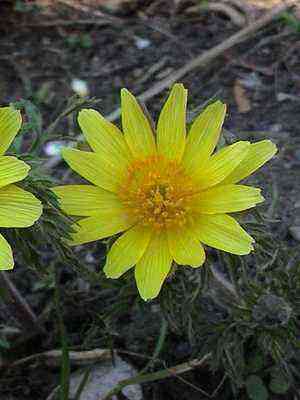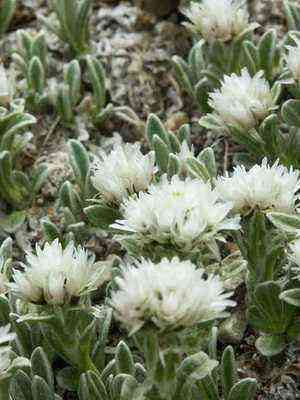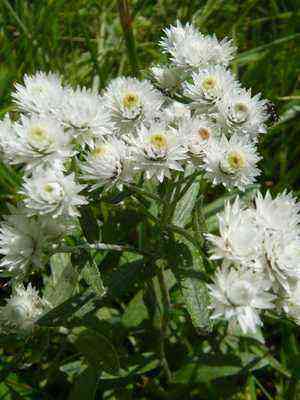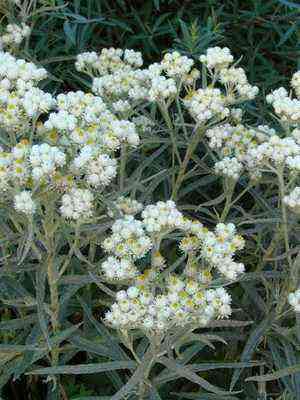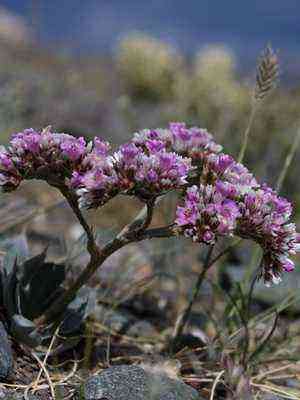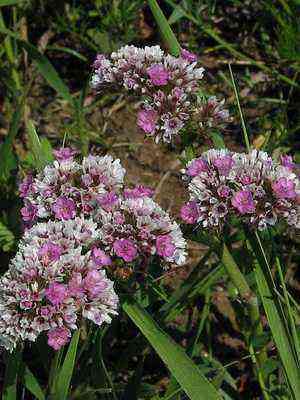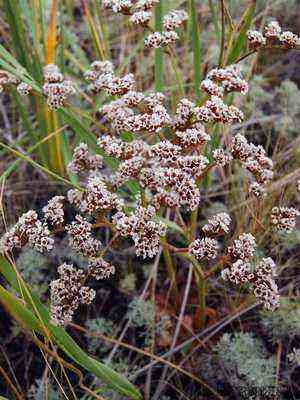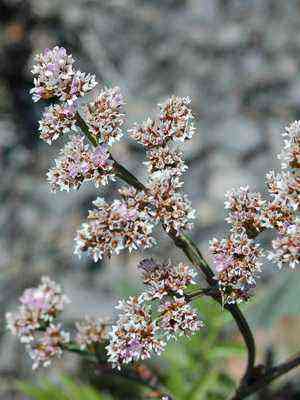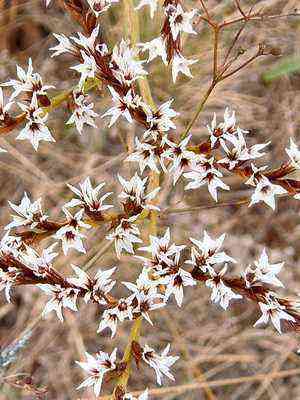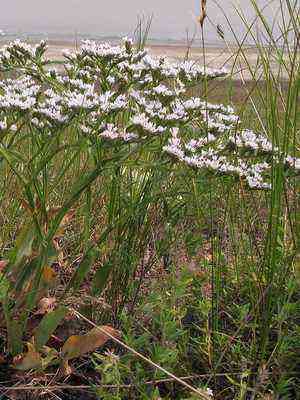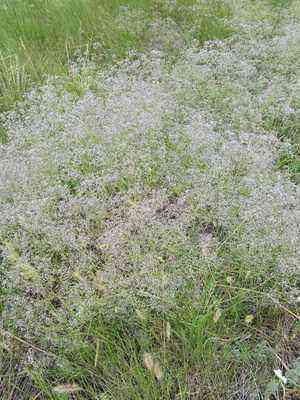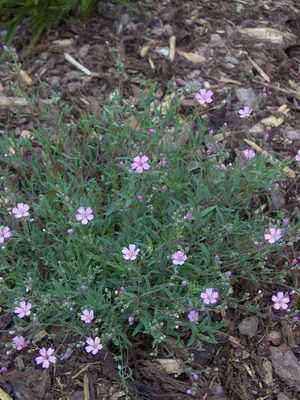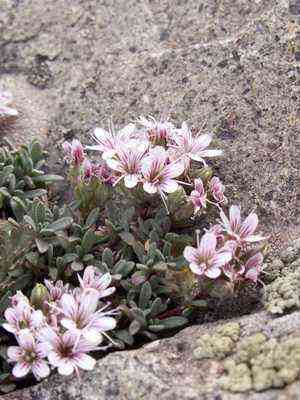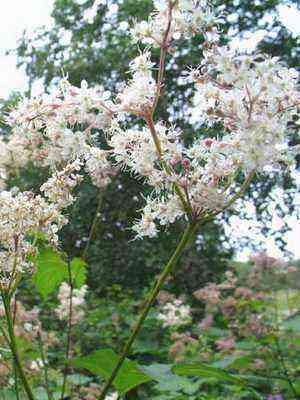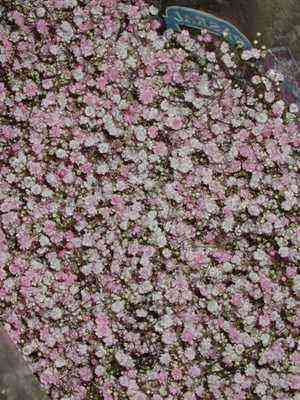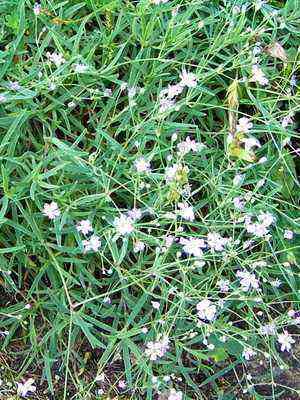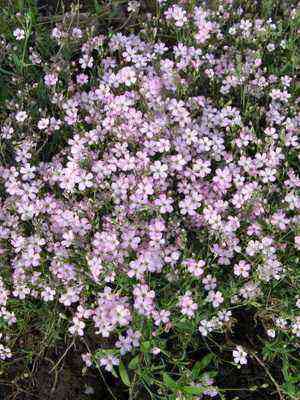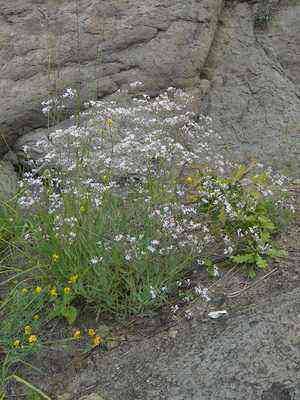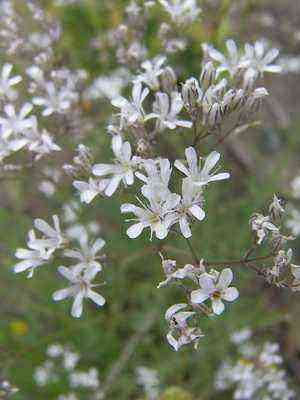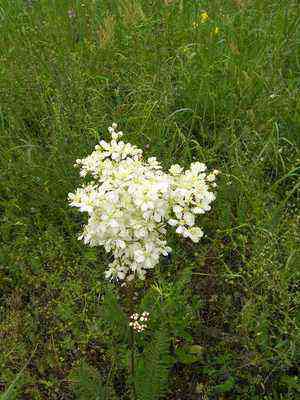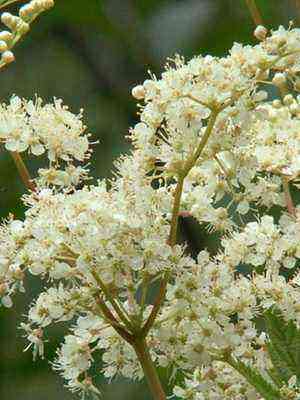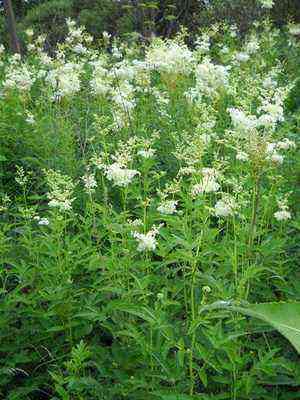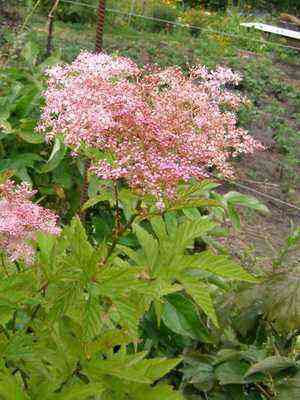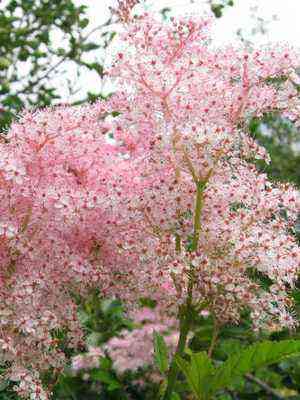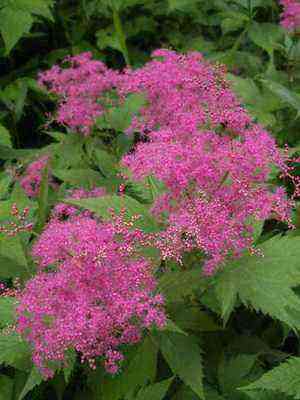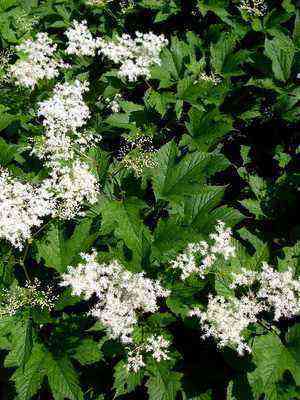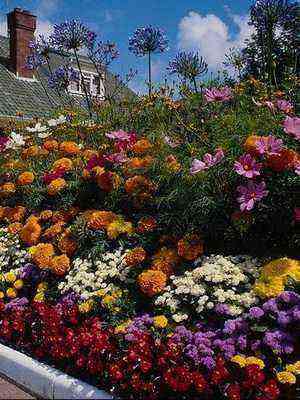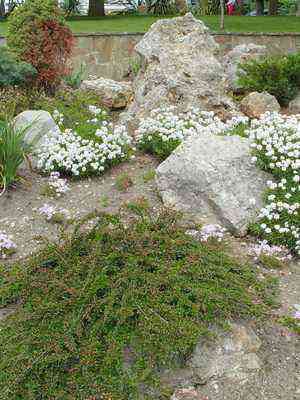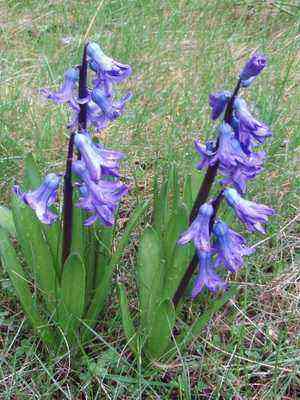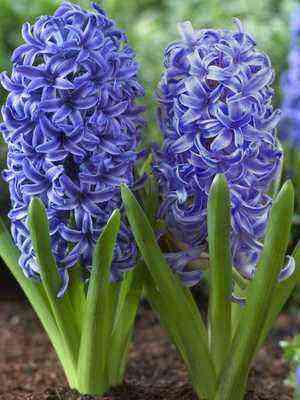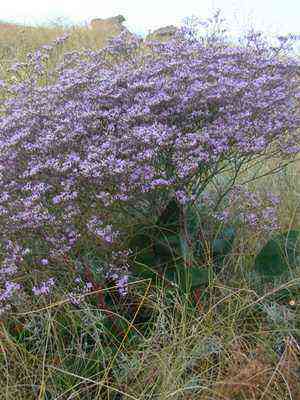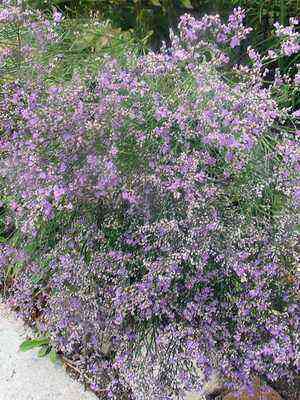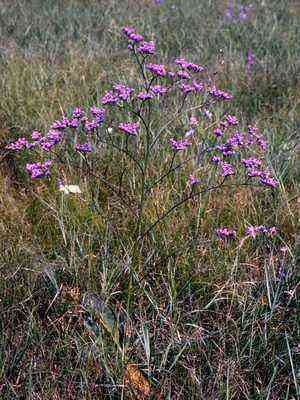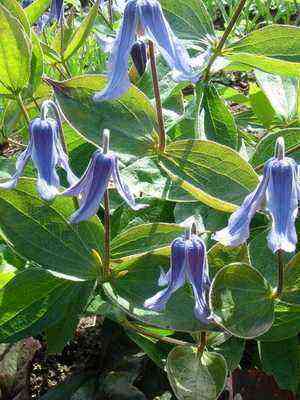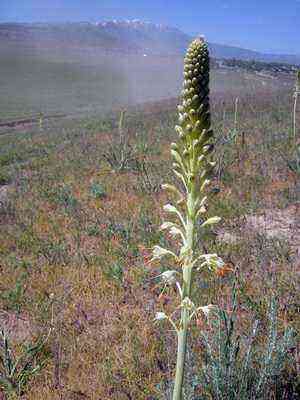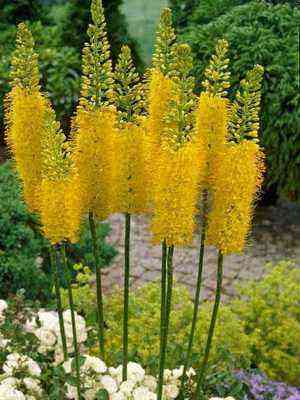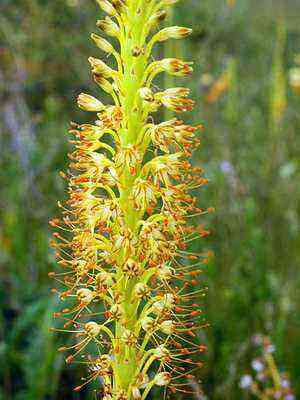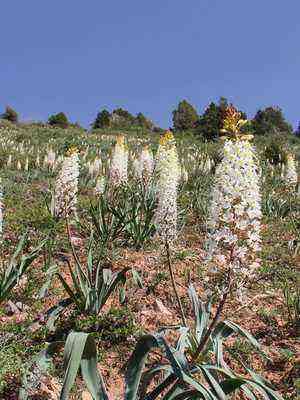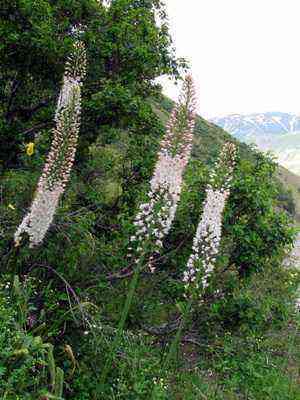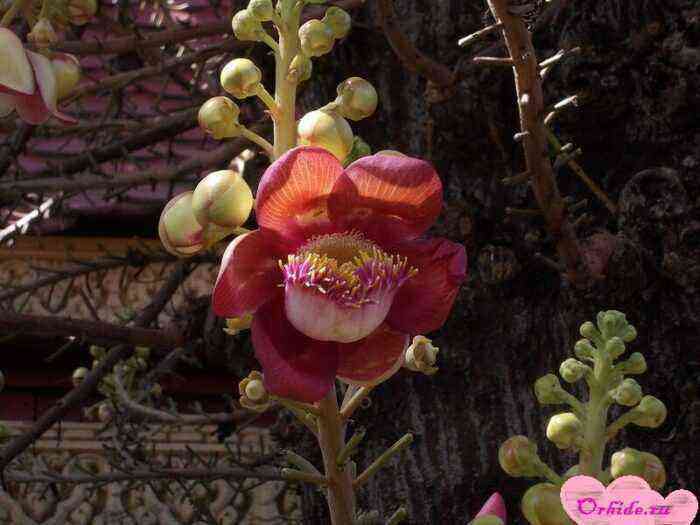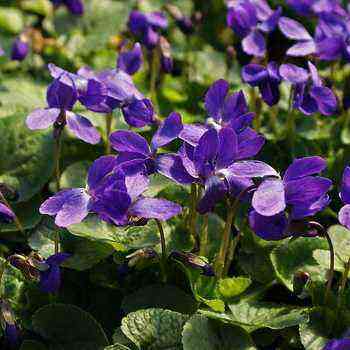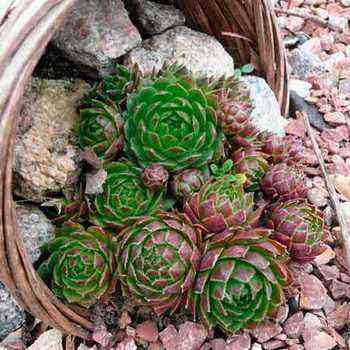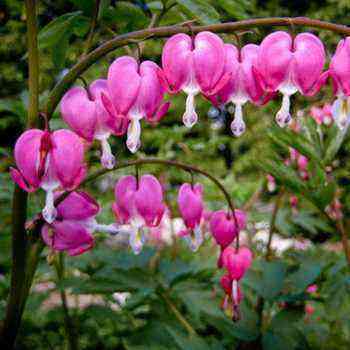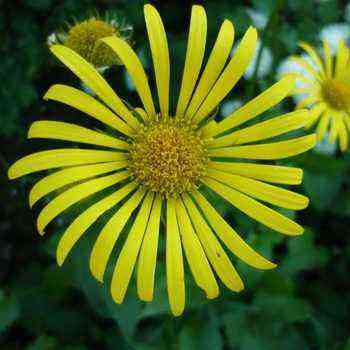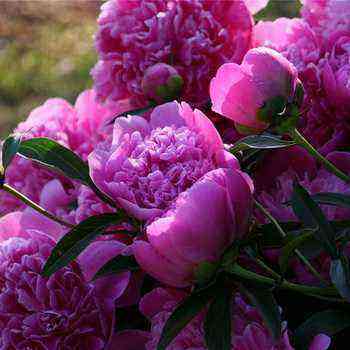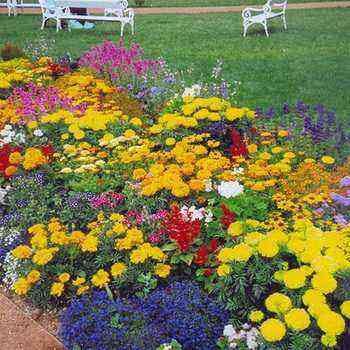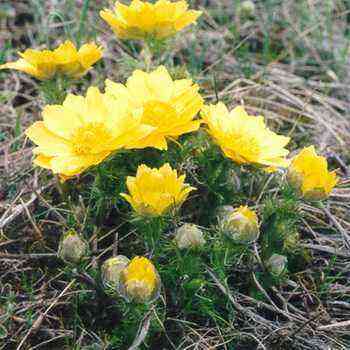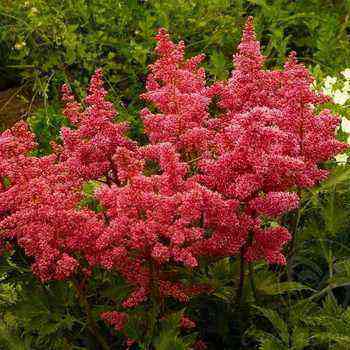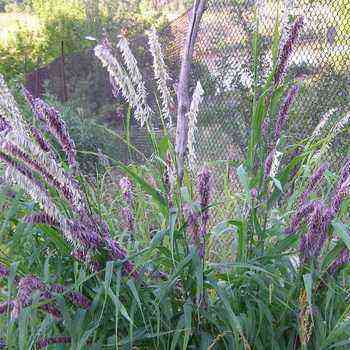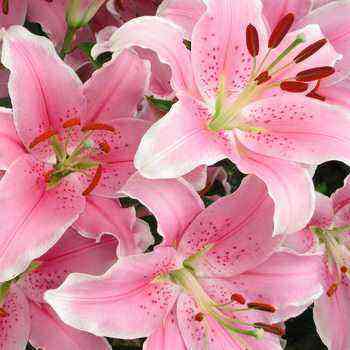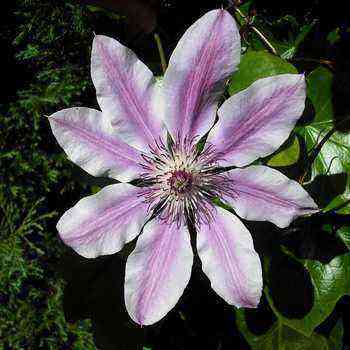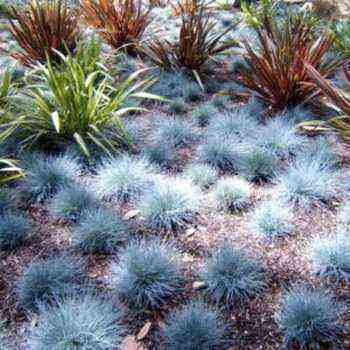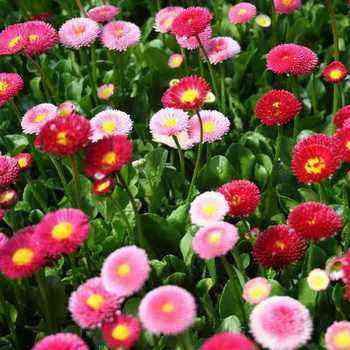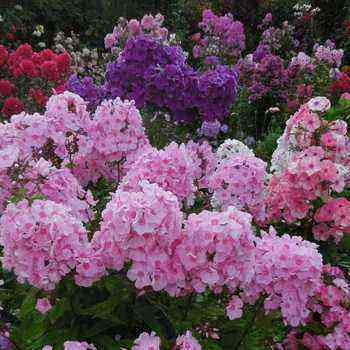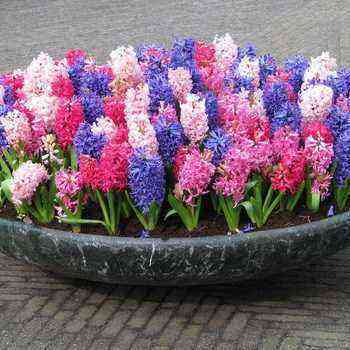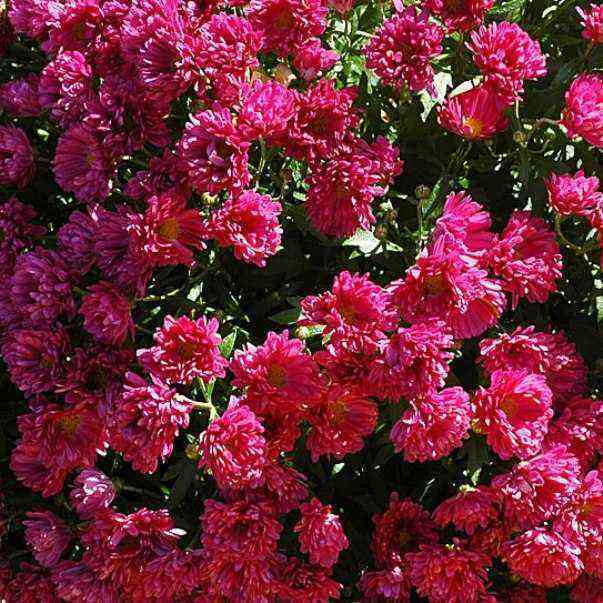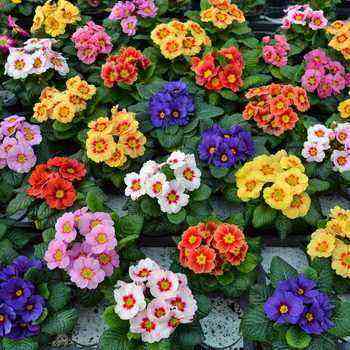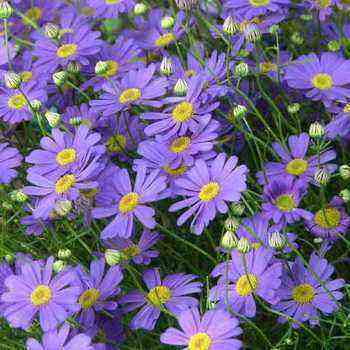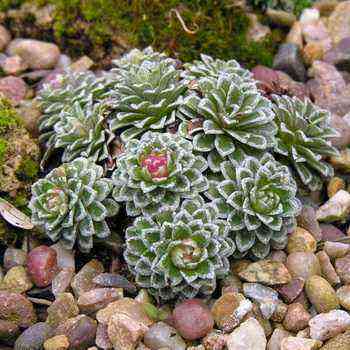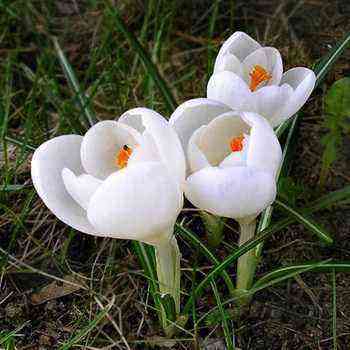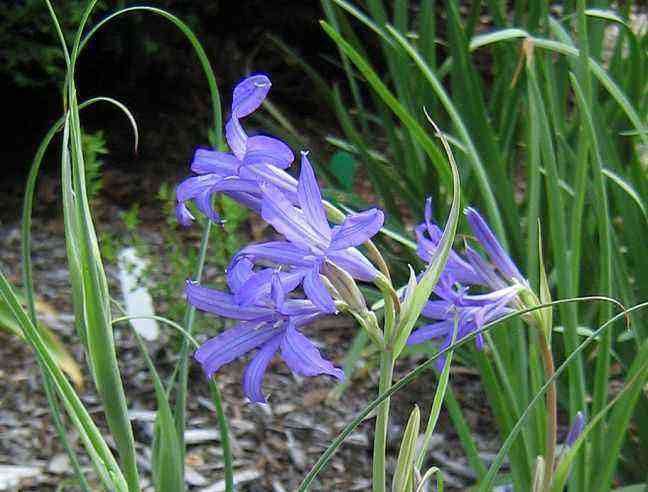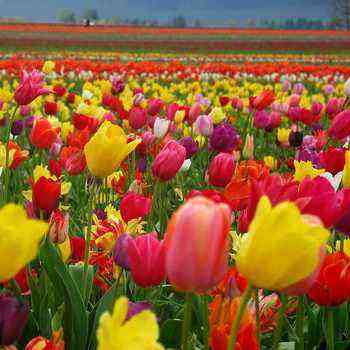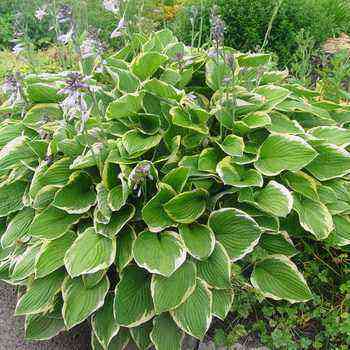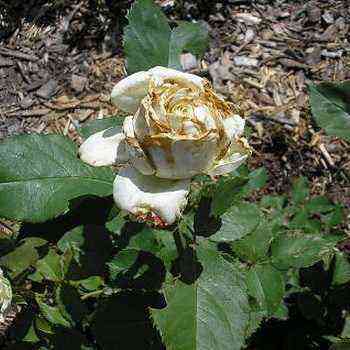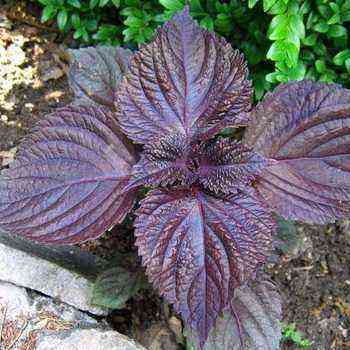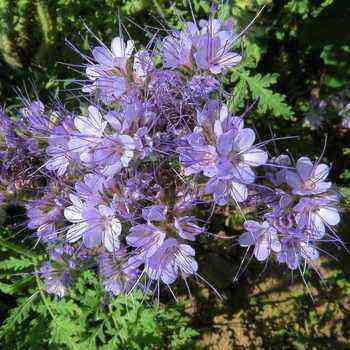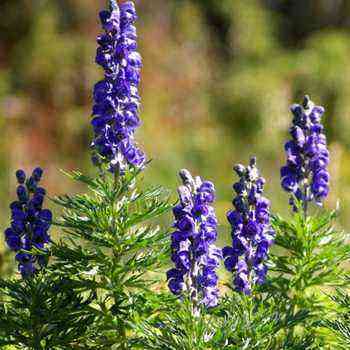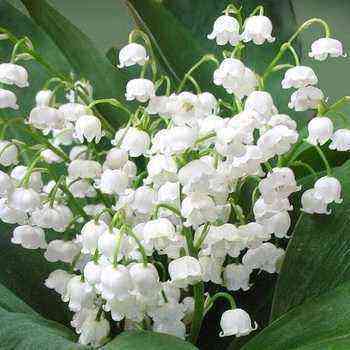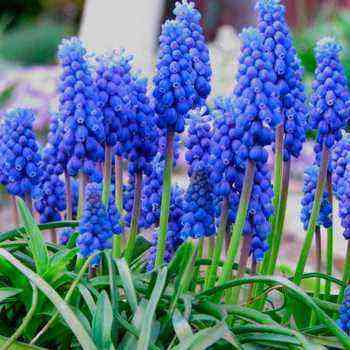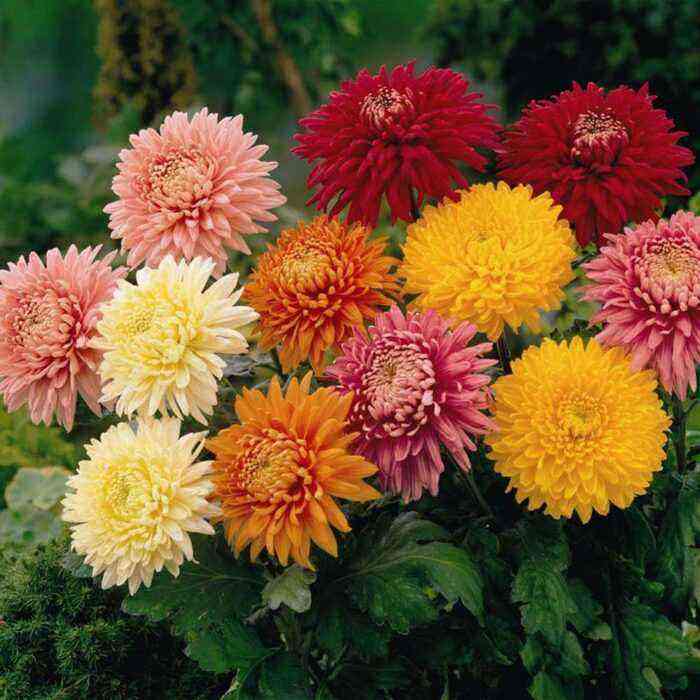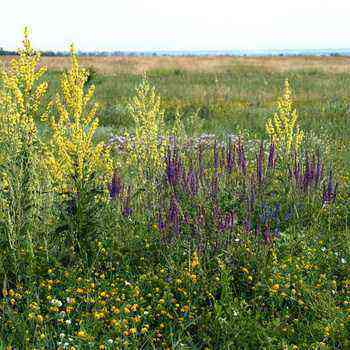
Below you will find out what other plants grow in the steppe zone and are suitable for cultivation in the middle lane. You can also familiarize yourself with the names, see photos of steppe flowers that adorn landscape flower beds and rockeries.
Drought tolerant steppe plants with flowers
This chapter lists steppe flowers with names that do not tolerate stagnant moisture.
Adonis (ADONIS). Buttercup family.
Spring adonis (A. vernalis) is an elegant spring plant of the steppes of Europe and Siberia. It is a perennial with a short rhizome and branched stems that form a bush.
20-30 cm high. Leaves are light green, finely divided.
The flowers are single, bright yellow, up to 8 cm in diameter, shiny and very elegant. Adonis blooms in early spring (late April – early May).
Growing conditions. Sunny areas with rich, loose alkaline soils, well-drained. This drought-resistant steppe plant with flowers does not tolerate stagnant water.
Breeding. Preferably by seeds, as it does not tolerate the division of the bush. Seeds do not sprout amicably, within a year. Sowing freshly harvested. Planting density – 5-6 bushes per 1 m2.
Adonis is a difficult plant to cultivate – an object for experienced hobbyists. But with proper planting, it can decorate a flower garden for 10-15 years without transplants.
Anaphalis (ANAPHALIS). Aster family (Compositae).
Two species of this drought-resistant steppe plant growing in East Asia and North America are cultivated. A bush with erect stems 50-80 cm high, with white-tomentose pubescence of stems, leaves and flowers. Leaves are narrow, linear, entire. At the ends of the shoots there are small silvery baskets in the corymbose inflorescence. Self-seeding easily.
Types and varieties:
Anafalis three-veined (A. triplinervis) – with larger leaves.
Anafalis pearl (A. margaritacea) – the leaves are smaller.
Growing conditions. Sunny areas with dry neutral soils.
Breeding. By dividing the bush (spring, late summer), seeds (sowing before winter). Transplant and division after 3-4 years. Planting density -9 pcs. per 1 m2.
Used in mixed flower beds, mixborders, rockeries.
Goniolimon (GONIOLIMON). Lead family.
Steppe and semi-desert perennials, typical “tumbleweed”, forming a dense spherical bush 10-40 cm high from highly branched inflorescences and oblong ovoid leaves collected in a ground rosette.
Look at the photo: These steppe flowers, which are silvery “balls”, can decorate any flower garden on dry soil and a winter bouquet.
Types and varieties:
Goniolimon beautiful (G. speciosum) – the leaves of the rosette are rounded, gray, inflorescence in the form of “deer antlers”.
Goniolimon Tatar (G. tataricum) – the leaves are ovate, pointed, the inflorescence is looser, corymbose.
Growing conditions. Sunny areas with deep, well-drained soils with the addition of sand. They do not tolerate stagnant moisture. Resistant to salinity.
Breeding. Preferably by seeds, seedlings bloom in the 2-3rd year, it is better to replant young plants. Perhaps cuttings in the spring. Stocking density – single.
An excellent plant for rockeries or as tapeworms on dry slopes, against the background of an inert layer (crushed stone or gravel). They are also used in arrangement, especially in winter bouquets.
Ornamental steppe plants
Below you will see photos and names of steppe plants, which are the most decorative.
Kachim, gypsophila (GYPSOPHILA). The carnation family.
These are mainly perennials from the steppes and semi-deserts of Eurasia. They have a deep taproot, small lanceolate leaves on knobby, strongly branching stems. Inflorescences-panicles of this ornamental plant of the steppe zone, consisting of small flowers, are numerous and provide an openwork, “flying” appearance of the bush (height 60-90 cm). An exception is because creeping (height 10-15 cm).
Types and varieties:
Swing paniculata (G. panicuiata) – large (up to 100 cm) tumbleweed bush, varieties:
“Compacta PLena”
“FLamingo” – with pink flowers.
Swing creeping (G. repens) – low, creeping, cultivar “Rosea” – with pink flowers.
Pacific (G. pacifica) – openwork bush, 50 cm high, with pink flowers.
Kachim holly (G. acutifoiia) – high bush (up to 170 cm), falling apart.
Growing conditions. Sunny places with loose neutral dry soils.
Breeding. Seeds (sowing in spring), seedlings bloom in the 2-3rd year, but they need to be transplanted two years old. Possible (but difficult) reproduction by buds of renewal with a “heel” in the spring. Planting density – single bushes.
Meadowsweet (FILIPENDULA). Family of Rosaceae.
A diverse group of plants, 15 species grow in the temperate zone of Eurasia and North America. Among them there are low dry-loving plants of the steppes – l. ordinary and high moisture-loving – l. Kamchatka, but it is always very decorative, with a delicate aroma, easily cultivated plants with a dense inflorescence of small fragrant flowers.
Types and varieties:
Drought-resistant, relatively low (height 30-50 cm) meadowsweet (F. vulgaris) has a rosette of openwork feathery wintering leaves, blooms in May, often grows a double form – “Plena”.
Mytilist’s knotweed (F. ulmaria) – 100-150 cm high with a dense inflorescence of small white flowers, a common plant of wet meadows and edges of central Russia.
Red meadowsweet (F. rubra) – 150-200 cm high with large feathery leaves and an inflorescence of pink flowers (variety “Venusta” with dark pink flowers), grows along the banks of rivers in North America.
Purple meadowsweet (F. purpurea) – 50-100 cm high with finger-like leaves and a panicle of purple flowers.
Camping Lapaznik (F. kamtschatica) – 150-300 cm high, forms a magnificent bush with large finger-like leaves and a panicle of white flowers (grows well in partial shade on moist clay soils).
Common meadowsweet – decoration of solar rockeries, can be planted in curbs. Others – create spots in flower beds of the “natural garden” type and in mixborders.
Growing conditions. Dry sunny places with neutral soil for l. ordinary, other species can grow in the sun and in partial shade, but always well
moist soils.
Breeding. By dividing the bush (in spring and late summer) and seeds (sowing before winter). Seedlings bloom in the 2-3rd year. Planting density – from single to 12 pcs. per 1 m2.
It is widely used in mixborders (in the foreground), rockeries, borders, in beds with fragrant herbs. Flowers are dried and used for flavoring
premises. Kamchatka meadowsweet is suitable for single plantings among the lawn or against the background of ground cover plants.
Hyacinth (HYACINTHUS). The family of hyacinths (liliaceae).
The genus has about 30 species growing in the Mediterranean. In culture, varieties of the eastern city are mainly grown.
Hyacinthus orientalis (H. Orientalis) – bulbous perennial, bulb spherical, compact bush, belt-shaped leaves, bell-shaped fragrant flowers, in a loose racemose inflorescence located on a fleshy leafless peduncle.
In nature, it grows in the steppes of Asia Minor. More than 200 varieties of this plant are known.
They are grouped into two groups:
1) varieties with simple flowers;
2) varieties with double flowers.
All of them bloom in early May for 10-14 days, have different peduncle heights (15-35 cm), differ in color.
Growing conditions. Sunny areas with well-drained, light sandy loam soil, enriched with humus, does not tolerate stagnant moisture. It is possible, but not necessary, to dig it up in June, dry it, and at the beginning of October plant it in the ground and cover it with spruce branches. Read more …
Breeding. Bulbs, baby bulbs. Planting density – 25 pcs. per 1 m2.
Tall steppe flowers
Below are the names and photos of steppe flowers, reaching a height of one meter.
Kermek, limonium (LIMONIUM). Lead family.
This is a tall steppe flower, also found in semi-deserts of Europe, Central Asia and Altai. They have a thick taproot extending deep into the soil and a rosette of dense elliptical basal leaves. Peduncles are branched, flowers are blue-violet.
Views:
Kermek broadleaf (L. platyphyllum = L. latifolium) – up to 100 cm high, the leaves are large, broadly oval, the inflorescence is friable.
Kermek Gmelin (L. gmelinii) – 50 cm high, narrow elliptic leaves, pyramidal inflorescence.
Growing conditions. Sunny location with drained sandy or rocky soils. Tolerates light soil salinity.
Breeding. Seeds (sowing before winter), seedlings bloom in the 2-3rd year. Transplant only young plants (up to 3 years old). Planting density – 5 pcs. per 1 m2.
Clematis, clematis (CLEMATIS). Buttercup family.
The genus includes shrubs, shrubs and grasses. Herbaceous perennials have a powerful deep root system, stems 50-100 cm high. Leathery leaves.
Flowers are solitary, drooping or in a corymbose inflorescence. They grow in steppe meadows, in the steppes and among bushes in Europe, the Caucasus and Central Asia.
Types and varieties:
Whole-leaf clematis (C. integrifolia) – 50-80 cm high, leafy stems lie down, and single blue-violet flowers 5-8 cm in diameter sit on their tops, lanceolate pubescent sepals give them decorative effect.
Clematis straight (C. recta) – about 100 cm high, with a corymbose inflorescence of small fragrant white flowers and large feathery leaves.
Growing conditions. Sunny places with dry, rich, drained soils.
Breeding. Seeds (sowing in spring), seedlings bloom in the 2nd year, by dividing the bush (in spring), cuttings are possible (spring).
Eremurus (EREMURUS). The family of asphodeliae (liliaceae).
The genus includes about 60 species, growing mainly in the steppes and semi-deserts of Central Asia. A rosette of linear leaves and a strong high peduncle, ending in a dense cylindrical brush of flowers, grow from a short disc-shaped rhizome. Plant height 70-200 cm, flowers are wide open, with long protruding stamens.
Powerful inflorescences are very decorative, so flower growers have always tried to grow these plants in central Russia, but, as a rule, unsuccessfully. Short humid summers, damp autumn and early spring inhibit the normal growth and flowering of these plants. Success is assured only if they are excavated annually.
Species and varieties. The most resistant yellow-flowered species are:
Eremurus narrow-leaved (E. stenophyllus) and Altai (E. altaicus).
Eremurus red (E. fuscus) и beautiful (E. spectabilis).
Eremurus milky-flowered (E. lactiflorus).
Eremurus powerful (E. robustus), up to 200 cm high – less promising.
Growing conditions. These species can be grown without digging in the summer for drying, in sunny areas with rocky neutral soils. For the winter – cover with spruce branches or leaf litter.
Breeding. By dividing the bush (August) and seeds (sowing before winter), the seedlings bloom in the 4-5th year. Planting density – 5 pcs. per 1 m2, but singularly better.

